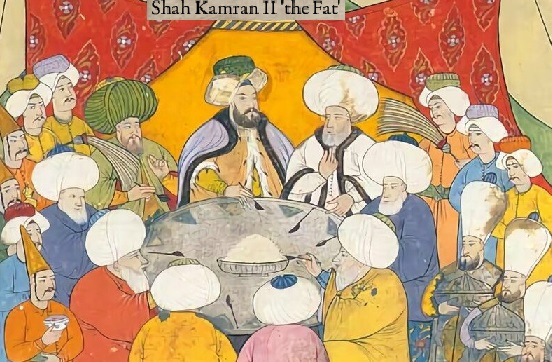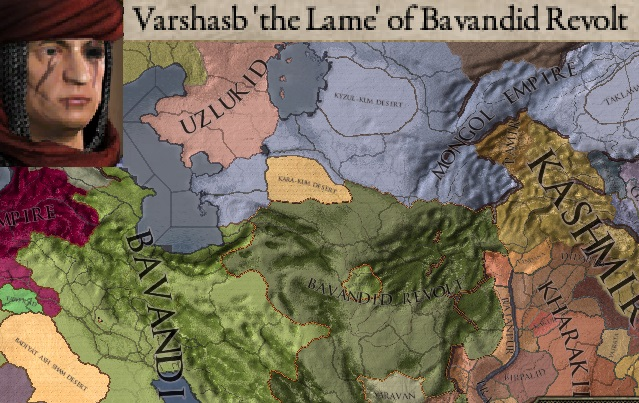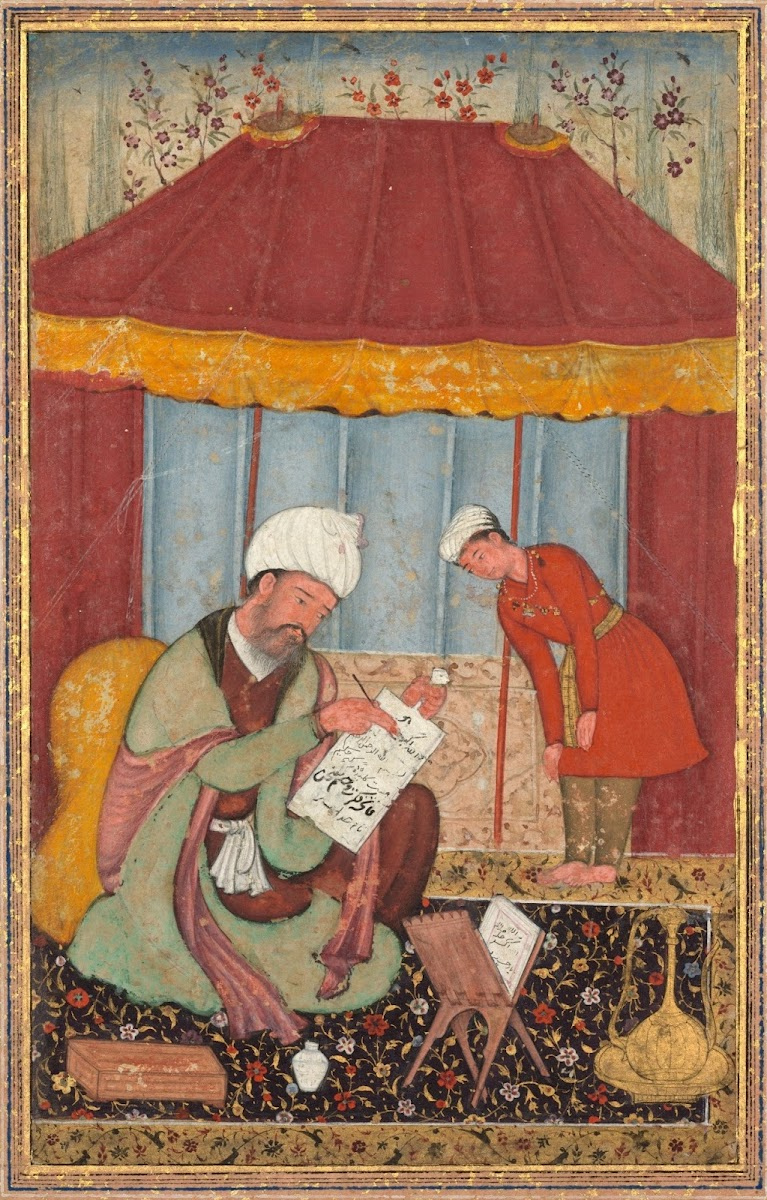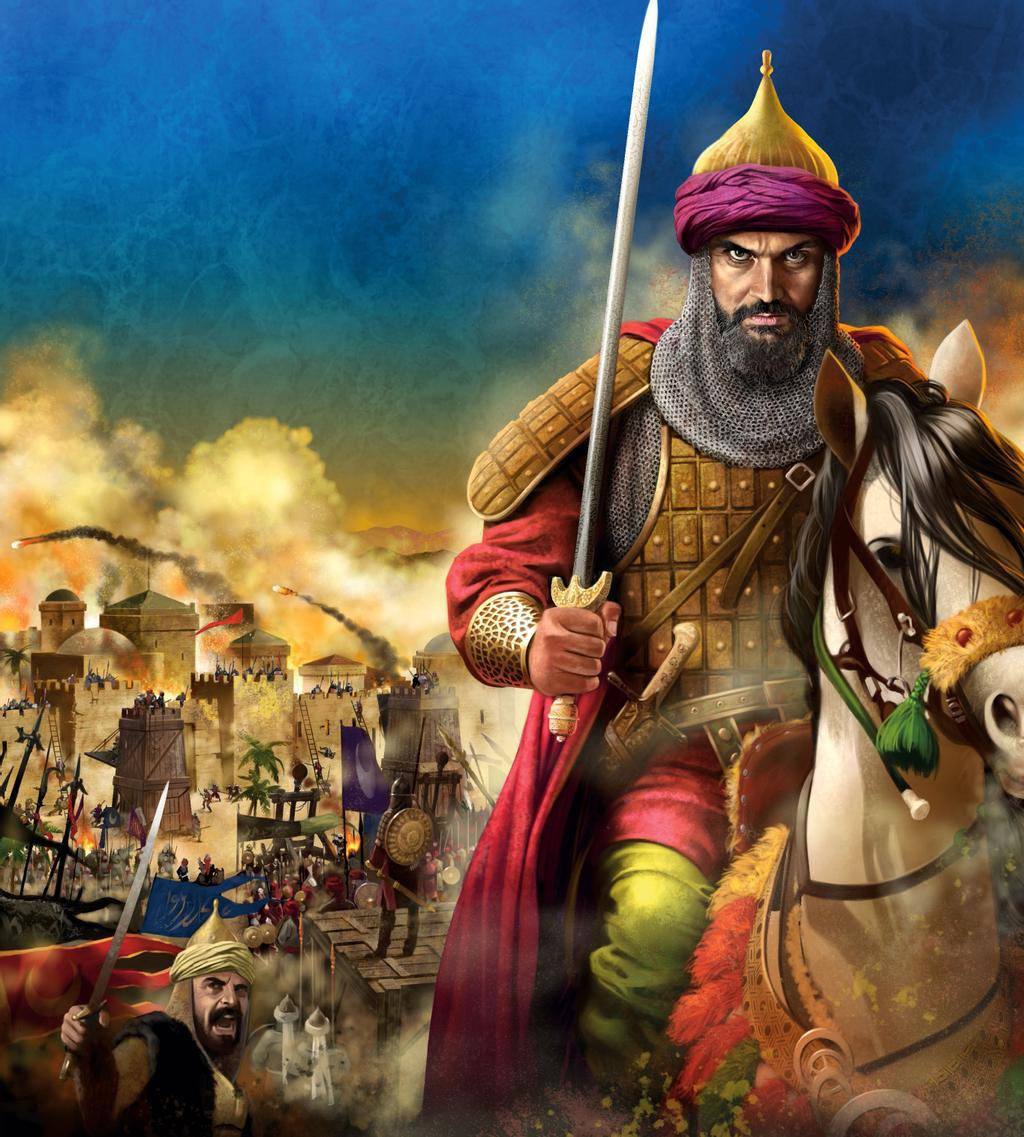The Last Sons of Sasan 1312-1329
Gholam bore greater resemblance to his long-lived father Mehrzad than he did his swashbuckling brother Sina. A pious man, close to the High Priesthood, he took forward his predecessor’s ambition to rebuild Baghdad into a grand city befitting a mighty empire. His contribution to this task would be the construction of the tallest tower in the world. The foundations of the project had been laid decades before by his father, but it was Gholam who poured in resources and energies to bring it to completion. In 1318 his great work was completed, unveiled as the Tower of Zurvan, to serve as the greatest fire temple in Zoroastrianism – reaching towards the very heavens themselves like a Medieval Babel, it loomed over the entire city. Through the Tower, and the many other building projects carried out over recent decades in the capital, the Persian monarchy had expended vast resources that could not be supported by the crown alone. This drove Gholam deeper into a conflict with the empire’s powerful magnates.
During the 1320s, Persia’s steady expansion continued. In eastern Anatolia, the lords of the northwestern borderlands renewed their efforts to push into the former territories of the Byzantine Empire – gaining new lands in Cilicia and Armenia. In the south meanwhile, Persia stretched its grasp into the Arabian Desert, as its influence reached out towards the Islamic holy cities of the Hedjaz.
Since the liberation from the Mongols, Persia’s great nobles had paid next to nothing towards the treasury, acted as a law into themselves, wielded independent foreign and even religious policies within their domain and paid little head to the authority of Baghdad. Although occasionally uniting in a shared mission – most notably the conquest of Syria and defeat of the Karluks – they had only ever done so by choice, never by duty or obligation. Gholam hoped to reign the excesses of the magnates’ power and bring a degree of coherence to the realm through a series of administrative reforms that would enhance central authority. As was to be expected, Gholam was frustrated and resisted from the outset by the powerful Satraps and sub-Shahs, with relations between the crown and upper nobility steadily worsening through the decade. Ultimately, this collision course led Gholam to his death as he joined the long list of Persian emperors to have been murdered before his time – as he was drowned while sailing on the Euphrates by a member of his own personal guard, believed to be in the pay of the nobles in 1319.
Gholam’s death was an existential threat to the Persian society of the post-Mongol period. After generations of inbreeding, not least between Gholam and his own wife – a half sister, the Bavandid line was riddled with malignant congenital traits. Ever dwindling fertility had been one of these problems, leaving just a single surviving male member of the dynasty’s primary line – Gholam’s teenage son Rostam. Worse, Rostam was of feeble mind and would never have the ability to govern in his own right or carry on his line. Despite his ascension, the Persian throne was, in practice, vacant. The Moabadan-Moabad, Reza III, moved quickly to establish control of Rostam’s government – seeking to carry on the legacy of his father in promoting a revival of Baghdad’s authority in secular and religious matter alike. Yet with an obvious power vacuum opening, this position was not to be accepted without dispute.
Persia quickly fell into a complex multi-sided struggle for power. At the centre of the conflict, three figures claimed the right to the imperial throne. In the centre, the sitting Shahanshah Rostam faced powerful rivals at either end of his realm. In the east Shahab Koohdashtid, now styled as the Shah of Khorosan, sought to accomplish the destiny of his dynasty that had been the leading force behind the defeat of the Mongol successor-Khanates in the previous century by establishing himself as emperor.
On the other side of the empire, a rather more unusual coalition gathered around the person of Peroz Babakid. The Shah of Mosul, he held large swathes of land in Assyria, Armenia and the Zagros under his personal control. But what propelled him towards power was faith and ideology. Peroz had adopted the ideas of the new wave of Mazdaki thinkers who had been advancing within the Zoroastrian Church for decades. Although not a revolutionary in the mould of his Tullid predecessors, Peroz maintained the traditional Mazdaki egalitarian ethos, was deeply hostile to the power of the High Priesthood and a strong centralised state and loudly voiced his support for religious tolerance in an increasingly diverse realm. With this message he attracted a powerful faction of misfits to his banner: Zoroastrian Mazdakis like himself, Kurdish Tullid Mazdaks, Assyrian Christians, Armenians – particularly the Oriental Orthodox followers of the traditional Apostolic Church that rejected the Eastern Orthodox mainstream, Khurmatza Mazandaran Mongols and Muslim Arabs and Lurs.
The conflict was further layered in complexity by three major revolts that would take place through the ensuing years of conflict. In the east, the Pashtuns, only having recently sworn loyalty to Baghdad, sought to restore their independence. In the west, Gholam’s death had acted as a trigger for a large popular uprising among Eastern Orthodox Christians – beginning among Greeks in Edessa, but quickly spreading to Arabs and Armenians throughout the western fringe of the empire. Finally, during the early 1320s Muslim Bedouin in the depths of the Arabian Desert began to gather behind the banner of Jihad – seeking to cast out the Christian and Zoroastrian occupiers who had conquered the heart of the Muslim world.
In the west, the opening phase of the war was led by the Christian rebellion sparking out of Edessa. Peroz Babakid led the majority of his army west from Mosul and joined with the local Persian nobility in Syria to put down the separatist rebel threat in a typically vicious campaign. The Babakids had hoped that this action would win the loyalty of their western flank, yet relations with the Syrian lords began to sour even before the Christian revolt had been put down. The Syrian nobility mostly consisted of the sons of the pious warriors who had followed Prince Sina in the Syrian Holy War at the end of the previous century, and as such were on the whole devoted adherents of Orthodoxy and the Moabadan-Moabad. As such, they could not tolerate the heterodoxy of the Babakids. Nonetheless, the Babakid army was far stronger than that of the Syrian lords, and they successfully established their control over the region during the first years of the war. Elsewhere, Peroz’s Mazandaran Mongol allies spearheaded an invasion of the Rostamite Caucasian lands of Azerbaijan and Derbent – slowing taking control over the mountainous territory. These efforts established the Babakids as masters of the entire north western portion of the empire.
Rostamite resistance to these conquests were limited as the High Priestly faction faced so many other threats elsewhere. Chief among these was Shahab Koohdashtid, the Shah of Khorosan. Within the many interlocking dramas of this period was a familial dispute within the powerful Koohdashtid dynasty. Shahab’s younger brother Kamran, who ruled as Satrap in the family’s ancestral homeland of Fars had denounced his brother’s revolt and instead sworn his loyalties to Rostam and Reza III. Enraged, Shahab ignored the probing raids of the Pashtuns on his own eastern flank to march some forty thousand men into the heart of Persia – capturing and plundering his brother’s princely seat at Shiraz, slaying him and finding many new allies among his kin in Fars.
With Shahab positioned imposing in the imperial heartland, he appeared to be an existential threat to the imperial faction. The Moabadan-Moabad therefore took the extraordinary step of taking on the leadership of the Rostamite army himself, and crossing the Zagros to confront the Khorosanis in battle. He had hoped that the Koohdashtids would not dare face down their spiritual sovereign on a field of battle. This proved a grave miscalculation. Shahab met Reza in a decisive battle near the ruins of ancient Persepolis and delivered a catastrophic blow to the Rostamites – slaughtering untold thousands of the High Priest’s men and sending them scattering them.
Although Shahab now appeared to have all of Persia open to him, his home territories in Khorosan were being ravaged by the Pashtuns – who had already sacked Merv, Samarqand and Balkh. Having battered the Rostamites into a weak position, he felt confident to return to the east to deal with the Pashtuns. The struggle in Khorosan carried on until 1324, when Shahab agreed a truce with the Pashtun Shah – recognising his independence in exchange for peace and the aid of several thousand Pashtun fighters to support his claim to the Persian crown.
While Persia fractured into three competing blocks, the Arabian Desert was aflame with the zeal of holy war. Following radical Islamic preachers, the Bedouin united behind the Jabirid clan to first push the Persians out of the desert oases in the centre of Arabian, and then the Christians from the sacred cities of Medina and Mecca in the Hedjaz. By the middle of the 1320s, the Jihadis had turned their attention eastward once more – seeking an outlet to the Persian Gulf. They made numerous efforts to capture Qatar and Bahrain, only being repulsed by the strength of the Persian fleet, while also attempting to besiege the important city of Basra, that guarded the trade flowing from the Euphrates and Tigris into the Gulf. Ultimately, these efforts were unsuccessful, yet they provided an unwelcome distraction and threat for the Rostamites who faced them down.
Back in the west, by 1324, five years of fighting had left the Babakids in a strong position. In that year Peroz’s bid for power would take a dramatic turn as he brought a large army southwards from Mosul towards the seat of imperial power in Baghdad. Fearing likely defeat and the capture of the Shahanshah, the royalists spirited Rostam and his courtly elite away from the capital and on a treacherous journey through Zagros. In the mountains, bands of Babakid-aligned Kurdish and Luri tribesmen harassed and pursued the royal party, desperate to claim the prize of the emperor as a captive, but were ultimately unable to stop them from reaching the safety of Isfahan – where Rostam joined the Moabadan-Moabad.
Even with the flight of the Shahanshah, Baghdad remained a well defended and fortified city that could likely hold out against attack for years. However, Peroz had a number of spies within the capital and concocted a plot alongside a group of Assyrians to open one of the city’s main gates – allowing the Babakids to swarm into the capital and overwhelm its defenders.
Despite the allegiance of a number of key minorities, the Babakids met with a hostile reception from the deeply Orthodox Zoroastrian majority – both Arab and Persian – while also being met with suspicion by the Jews, who had long been closely aligned to the Bavandids. Serious rioting in the weeks after the fall of the city for a time forced the Babakid forces to withdraw to the city’s citadel, before they unleashed a spate of massacres against the civilian population in an effort to restore order, damaging the recently rebuilt city.
Baghdad’s fall sparked indignation among the Orthodox Zoroastrian community, sparking an unspoken truce between the Khorosanis and Rostamites. Indeed, the fall of Baghdad had been a key driver in Shahab’s decision to accept Pashtun secession, so that he might bring the bulk of his force back westward. Bypassing the Rostamites, now increasingly isolated in the Jibal region around the cities of Isfahan, Tehran and Qom, Shahab invaded Mesopotamia and, after winning a major battle near Najaf in 1325, brought Baghdad under siege. The Babakid defence was better organised than the Rostamites had been, but nonetheless, Shahab triumphantly captured the city in 1326 – forcing the Babakids back towards Mosul.
Despite this victory, the Koohdashtid army had left itself exhausted and isolated so far from his home territories. This situation was worsened as the Babakids refocussed their energies on tightening their stranglehold over the Zagros – in effect building a cage for their enemies within Iraq. Realising this dangerous situation, Shahab attempted to reopen the path through the mountains by force of arms – meeting his rival for the throne, Peroz, in battle at Ilam in 1327. Although the fighting itself was somewhat inconclusive, Shahab himself was killed during the battle. Without their leader, the Koohdashtid army began to splinter, with many reluctant to keep fighting under the banner of his less inspiring son Khosrau. Baghdad was recaptured by the Babakids later that year as their opposition started to felt away and in 1328 the emperor himself, Rostam was captured in Isfahan as the Babakids began to overwhelm central Persia.
With the Rostamite faction falling away, the High Priest Reza III fled eastward with the remnants of his army and made common cause with those Koohdashtids who remained in the field – forming a united opposition to the heretical Babakids, and accepting Khosrau now that Rostam was in enemy hands. These acts of desperation were ultimately fruitless, as by now the momentum of the Babakids was unstoppable. As his armies poured into Khorosan in 1329, Peroz quickly overwhelmed the territory and forced his enemies to submit once and for all.
At the end of the year, Peroz orchestrated a humiliating ceremony in which Rostam formally surrendered his titles and any claim to imperial authority and the defeated lords of the east each in turn kissed his feet and swore their undying allegiance to the new Shahanshah. Worst of all, High Priest Reza was forced to place the imperial crown on the head of his enemy, just as his predecessor had crowned Vandad following the defeat of the Mongols in 1260, and join the lords in supplicating himself to his new master – making clear his inferiority in rank to the new emperor. Peroz then walked out among the common soldiery of his army - Zoroastrians, Mazdaks, Christians and Muslims - to be hailed as their Shahanshah. After a decade of warfare, Persia was at peace once more with a new emperor and a new dynasty – the blood of Sasan having finally run dry. Despite the ructions of these years, Peroz inherited an empire that was still largely intact – despite the loss of territory in central Arabia and the Pashtun lands around Kabul and Makran. With his deeply felt belief in Mazdaki-inspired ideas of religious tolerance, egalitarianism and decentralisation but the reputation of a brutal warlord and usurper after his conquest of the empire, Peroz was a frightening and enigmatic to many who feared a return to the chaotic era of the Mazdaki Wars two centuries before.






























































































































